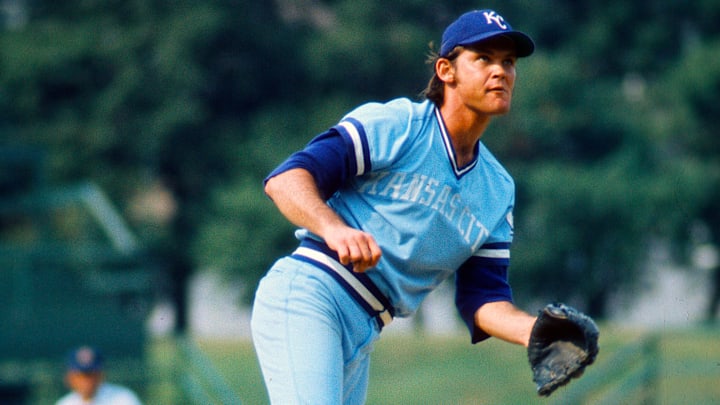The Royals entered 1974 with high expectations
Understandably, the club rode into 1974 on a high, but the good times didn't last. During the offseason, shrewd Royals general manager Cedric Tallis, whose dealmaking laid the foundation for his club's '73 breakthrough and the greater successes that followed, made one of the few bad trades on his resume, sending Lou Piniella to the Yankees for pitcher Lindy McDaniel.
McDaniel had a fine 21-year major league career, but was rapidly approaching the end when the Royals acquired him. He went 1-4 in 38 games as a reliever in 1974 and retired after the next season. Piniella, on the other hand, became a fixture in the Yankee lineup, and a passionate adversary in the rivalry that developed between the two teams over the next decade. It is only speculation, but one can't help but wonder if this misfire paved the way for Kauffman to replace Tallis with Joe Burke that June.
Tallis hadn't completely lost his touch, though. He traded third baseman Paul Schaal to the Angels in April, cementing Brett at the hot corner. Unfortunately, Brett wasn't yet the Hall-of-Famer Royals fans came to love — Brett hit .282, but with only two home runs and 47 RBI in 133 games. Fortunately, though, famed hitting coach Charlie Lau began working with him that season ... the rest is history.
But in his second year, Frank White was making strides as a backup infielder and learning at the feet of Cookie Rojas. And on his way out the door, Tallis drafted Willie Wilson, providing the Royals with another future star and an important piece to their dominant late '70s run.
Much of the core was in place in 1974 and producing at a high level. Hal McRae was the breakout star of the group, putting together the best season of his career at that point, and setting a precedent for the next decade by slashing .310/.375/.475 with 15 home runs, 88 RBI, 36 doubles, and a 139 OPS+.
And he wasn't the only Royal wowing Kansas City fans. Amos Otis, then the face of the franchise, posted a 121 OPS+ with 12 homers, 73 RBI, 31 doubles, and nine triples. At first base, Big John Mayberry slugged 22 home runs and drove in 69 runs. Rojas and Freddie Patek didn't bring the same pop to the plate, but they manned the middle infield at a high level.
The lineup had its holes, but at a glance, it's difficult to understand how this team struggled as much as it did. Perhaps the answer lies in its pitching.
